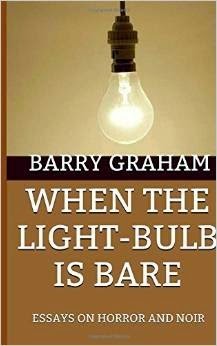Opening this weekend:
Spare Parts—A down-on-his-luck substitute science teacher at a Phoenix high school reluctantly inherits the job of advising the robotics club. He finds his handful of students to have talent, ingenuity and heart. They are also undocumented, and have various personal challenges. They enter their low-budget, scraped-together robot submersible in an underwater robotics competition for college students at UC Santa Barbara.
George Lopez plays the teacher—actually a conflation of two guys—in this triumph-of-the-underdogs comedy-drama, based on a true story. Carlos PenaVega of
Big Time Rush leads the quartet of guys, all charming, who play the team, with the grownups represented by the likes of Marisa Tomei, Esai Morales and Jamie Lee Curtis as the wry, amused principal.
Directed by Sean McNamara from a script by Elissa Matsueda, based on “La Vida Robot,” a 2005 article by Joshua Davis in
Wired,
Spare Parts is one hundred percent out of the standard
Stand and Deliver or
Hoosiers inspirational high school drama playbook. As such, it’s perfectly well executed, crisply paced, energetically acted, with obligatory crises and touches of sweet humor and romance.
What makes it different from other films of this sort is that it puts a human face on the plight of undocumented kids in the US, trying to get somewhere in life, and in some cases—like that of Oscar Vasquez, the main kid here—to serve this country, and blocked by the obtuse idiocies of our immigration policy. At the end of
Spare Parts, when we’re shown the real-life outcomes of the team’s stories, it’s hard not to be moved by them. As such, this very conventional movie could help to win the hearts and minds of mainstream audiences.
A side note: The film is mostly set in here in west Phoenix, in and around Carl Hayden High School. But it was mostly shot in Albuquerque—probably thanks to the obtuse idiocies of this state’s production-tax-incentive policy—and it looks it. Just as the U.S. hurts itself economically by shutting out kids like these, so Arizona missed out on some of the economic benefits of this uplifting Arizona story.
A Most Violent Year—The setting is New York, and the year referred to is 1981, a record-breaker for violent crime in the Big Apple. Our hero is Abel Morales (Oscar Isaac), who was set up in business by the gangster father of his wife (Jessica Chastain). Abel runs a fleet of fuel-oil trucks which regularly get hijacked, in broad daylight, by the thugs of his business rivals.
But Abel is determined not to be a crooked businessman. His wife, on the other hand, is perfectly comfortable calling on her family connections, especially after their children are threatened.
Written and directed by J. C. Chandor of the impressive
All Is Lost,
A Most Violent Year seems intended as a stylistic throwback to the crime dramas from around the period it depicts—something dark and brooding directed by Sidney Lumet or maybe Stuart Rosenberg, with cinematography by Gordon Willis or Andrzej Bartowiak. The star, almost certainly, would have been Al Pacino.
The young Pacino is, at least, who Isaac seems to be channeling with his quiet, intense performance; Chastain is perhaps trying for Faye Dunaway. Albert Brooks shines as their long-suffering, ironically upbeat lawyer, a role that might have been played, in 1981, by, say, Albert Brooks.
Chandor gives the story an authentic feel, nothing too hokey or melodramatic, and his revulsion to violence seems genuine. More importantly, his tacit critique of the way other movies in this genre romanticize violence is well taken. But there was something about Abel’s naïve and slightly sanctimonious protestations of purity that I found comical—in the context of his career choice, it’s like he’s a fisherman determined never to get wet.
This engrossing, polished movie is, somehow, both a tease and a scold. As well-conditioned audience members, we want to see Abel retaliate violently against the thugs—the movie seems almost to tremble on the verge of gratifying this wish, yet Chandor is telling us that, at bottom, we’re wrong to want this. He’s right, of course, but the moviegoer’s bloodthirsty heart wants what it wants.
Paddington—Based on the children’s books by Michael Bond, this story of a civilized, courteous, marmalade-loving bear from “Darkest Peru” who winds up in London on the platform at Paddington Station is cute and funny, with first-rate use of CGI, cleverly-directed, Rube-Goldberg-like slapstick, and some good, silly, free-floating gags. Sally Hawkins and Hugh Bonneville are excellent as the heads of the upper-middle-class family that takes him in, and Jim Broadbent, Peter Capaldi and Julie Walters contribute nice turns as well.
The movie is even a little bit touching. Bond claimed he was inspired by the sight of tagged refugee children in the train stations during WWII, and the theme of hospitality to strangers runs through
Paddington too, without heavy-handedness.
The only serious trouble into which the movie runs us the introduction of a villainess, a nutty museum taxidermist (Nicole Kidman) who wants to mount a specimen of
Ursa Marmalada. This Cruella de Vil knockoff is gratuitous, and a bit overly grim for the tone of the tale.
Still, this strand allows us the sight of Kidman in a blond China-doll 'do, with really chic bangs, plus a good-natured send-up of the star’s ex. So it isn’t a total loss.






































